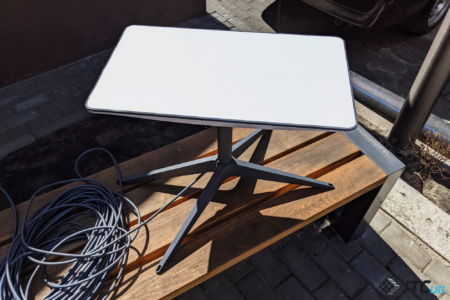
In the spring, we reviewed Starlink. Then it was definitely relevant, because it helped our military, and now ordinary Ukrainians are considering this purchase for themselves. Therefore, we are re-releasing this material so that you can learn more about this station and decide for yourself whether you should buy it.
Today, the Starlink Kit satellite Internet system from the world’s most famous billionaire, Elon Musk, is under review. We finally got our hands on a copy that we were able to test in the conditions of an urban environment; so we will consider in detail how to connect to the SpaceX satellite network using the Starlink terminal, the features of its operation, and also talk about the practical application of the system.
About the device
The Starlink global satellite system is a project of Elon Musk’s SpaceX company. Development of the system began back in 2015, test prototypes were launched in February 2018, and the first group of 60 satellites was launched in May 2019.
Connection to satellites is carried out using a satellite antenna, which independently determines the location of satellites and adjusts its position to ensure the highest quality signal reception.
Course
Development in Java
Learn the popular Java programming language at a time convenient for you, and earn from $1000 at the beginning of your career
REGISTER!
The cost of the overview configuration of the Starlink terminal is $500, and the monthly subscription fee is $100.
Complete set
The entire set supplied to the user consists of two main elements: a satellite antenna on a rack and a Wi-Fi router. These elements are connected to each other by a 30-meter wire, and one power cable with a standard European plug comes from the router. So the kit looks like this:
- Satellite dish
- Mounting for the antenna
- Router
- 30 m cable
- Power cable
- Cable for wired Ethernet connection
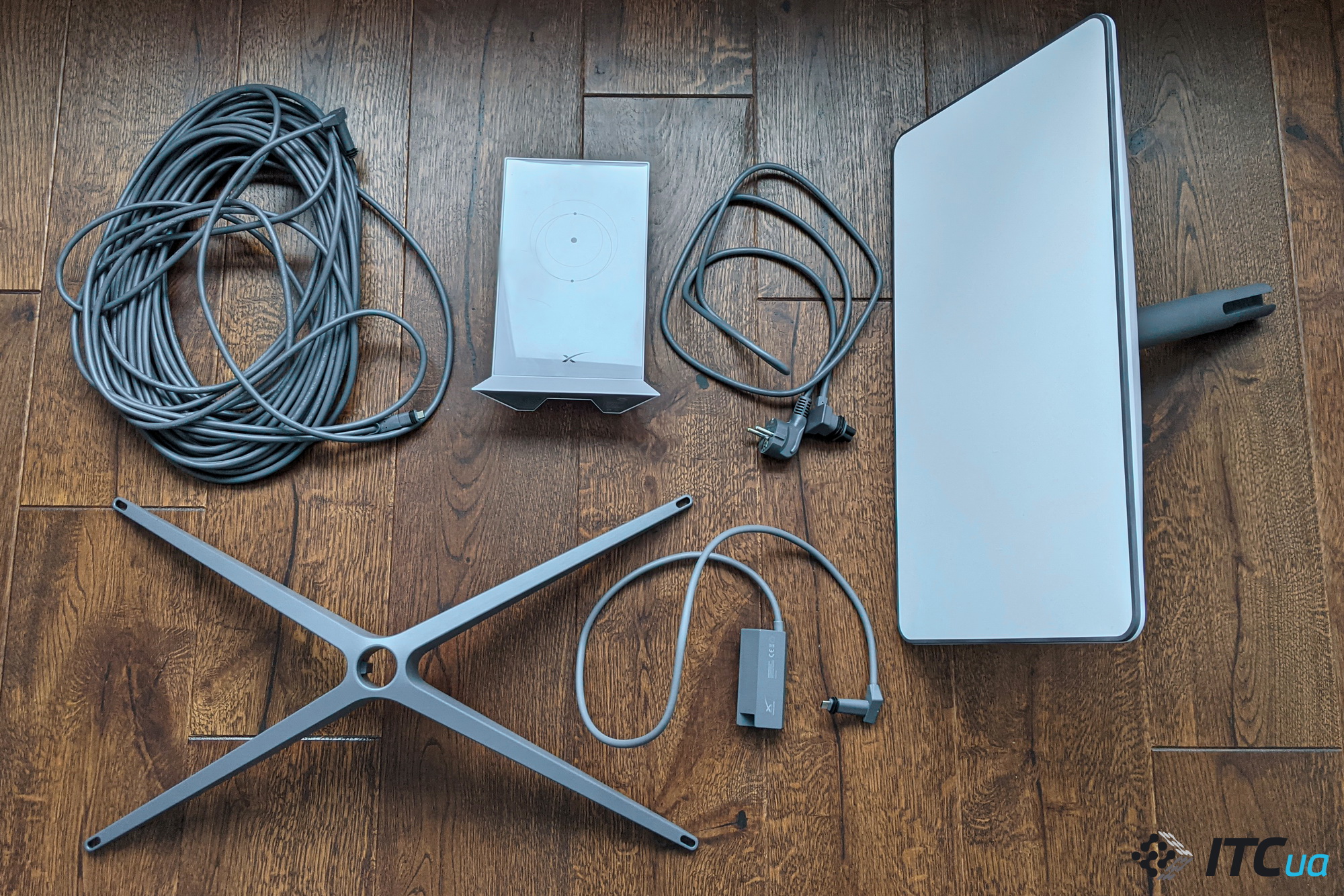
Design and technical characteristics
Outwardly, everything looks as concise as possible: the cables are made in gray, the router is completely white, and the white plate is on both sides, with gray edging and gray fastening.
The mount includes screw holes so you can mount the Starlink antenna to the roof or wall of your home.
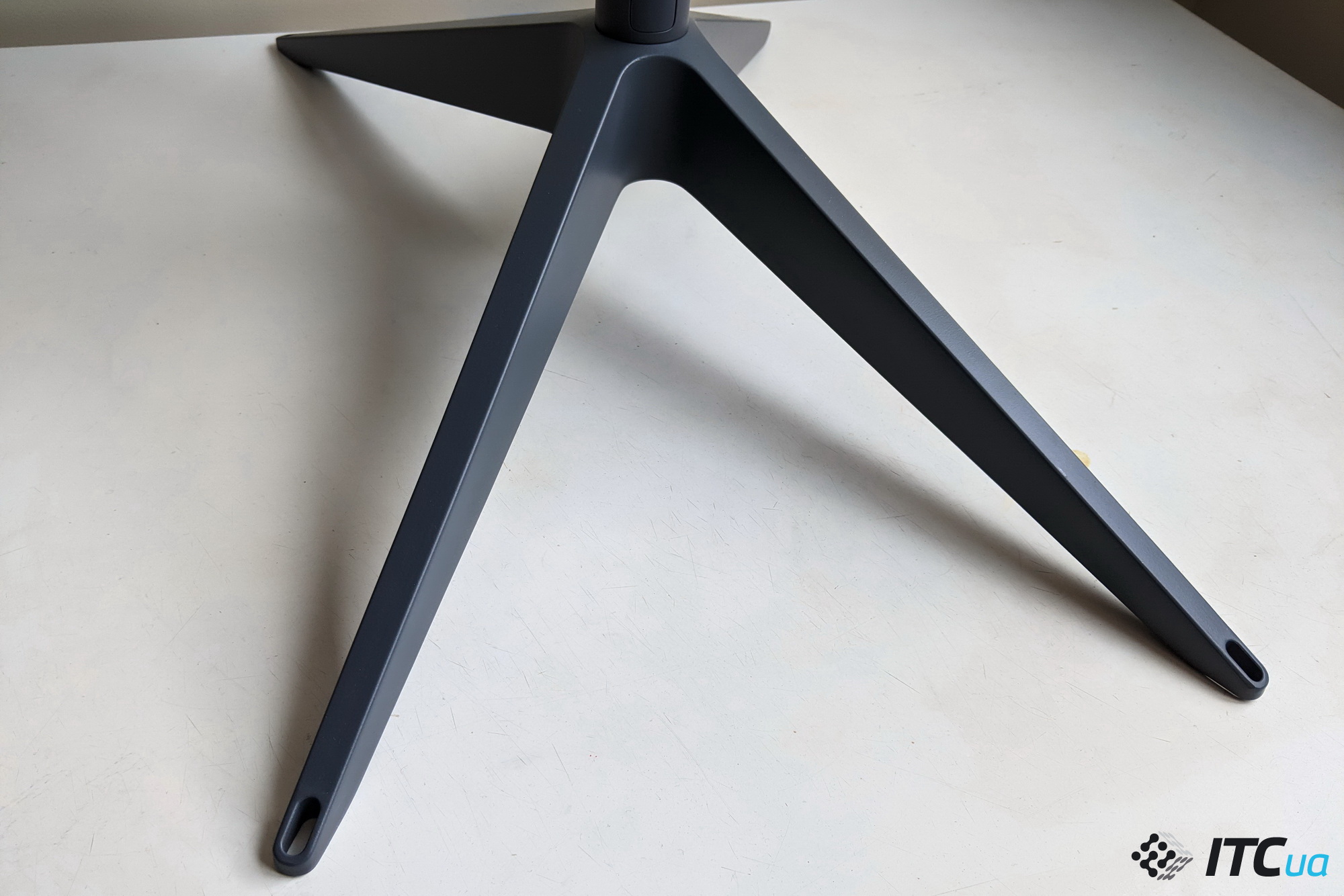
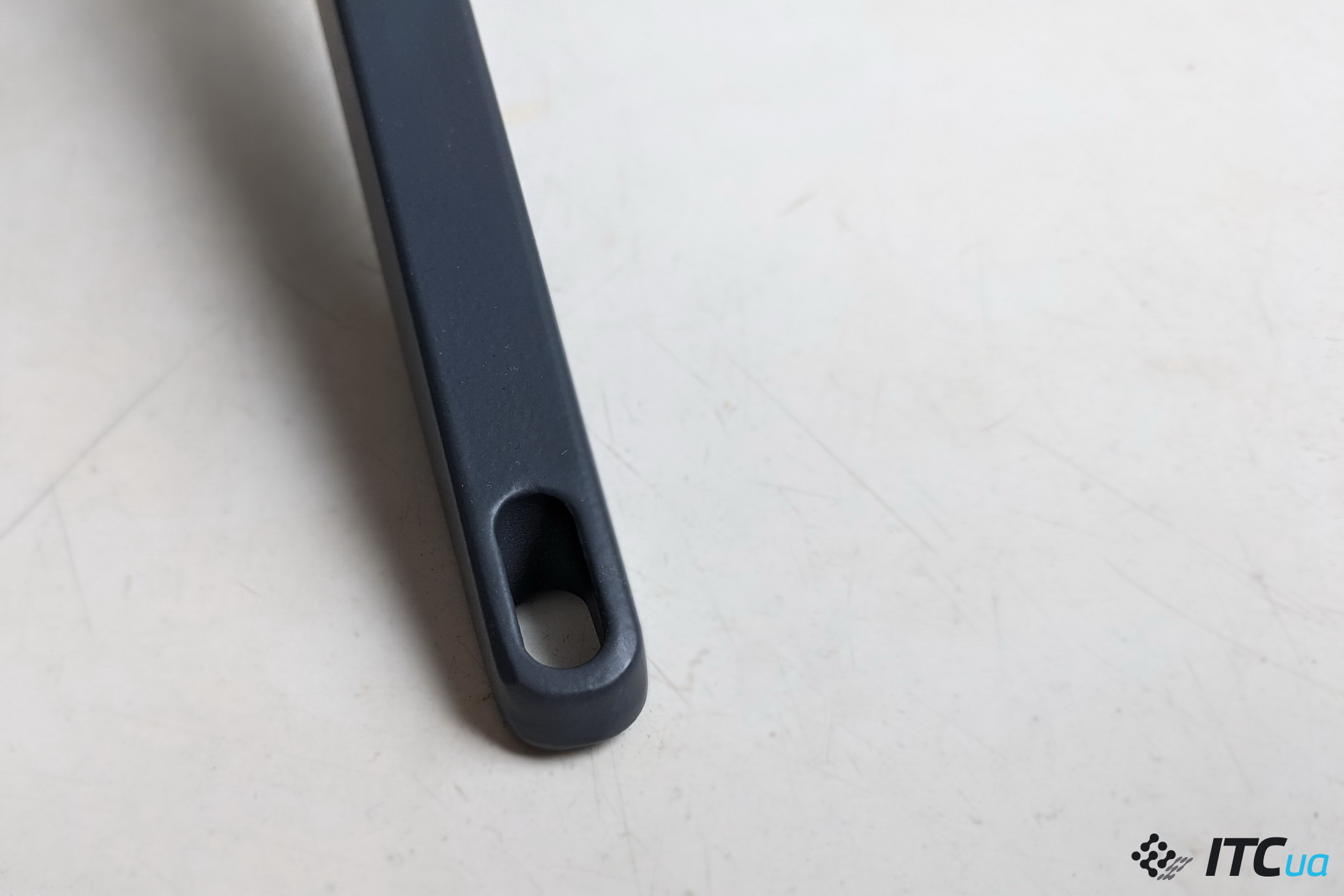
The antenna has a noticeable sail effect and will sway appreciably in strong gusts of wind, but the mounting legs are spaced wide enough to level it out. The plate is inserted into the base and fastened with a latch – so everything is as simple as possible.
Starlink settings
- Dimensions: 50×30 cm
- Weight (with cable): 4.2 kg
- Height: 61 cm
- Mast diameter: 3.4 cm
- Operating temperature: from -30 ° C to +50 ° C
- Degree of protection: IP54
Router parameters
- Standards: IEEE 802.11a/b/g/n/ac
- Dual band 2.4 GHz and 5 GHz
- WPA2 and WPA3 security
- Operating temperature: from -30 ° C to +50 ° C
- Degree of protection IP54 (waterproof), configuration for indoor use
By the way, during operation, the device emits a barely audible hum and heats up noticeably. And interesting features include forced heating to remove icing and snow, as well as switching to Stow mode, when the antenna is brought to the same position as it was immediately after unpacking, for convenient transport.
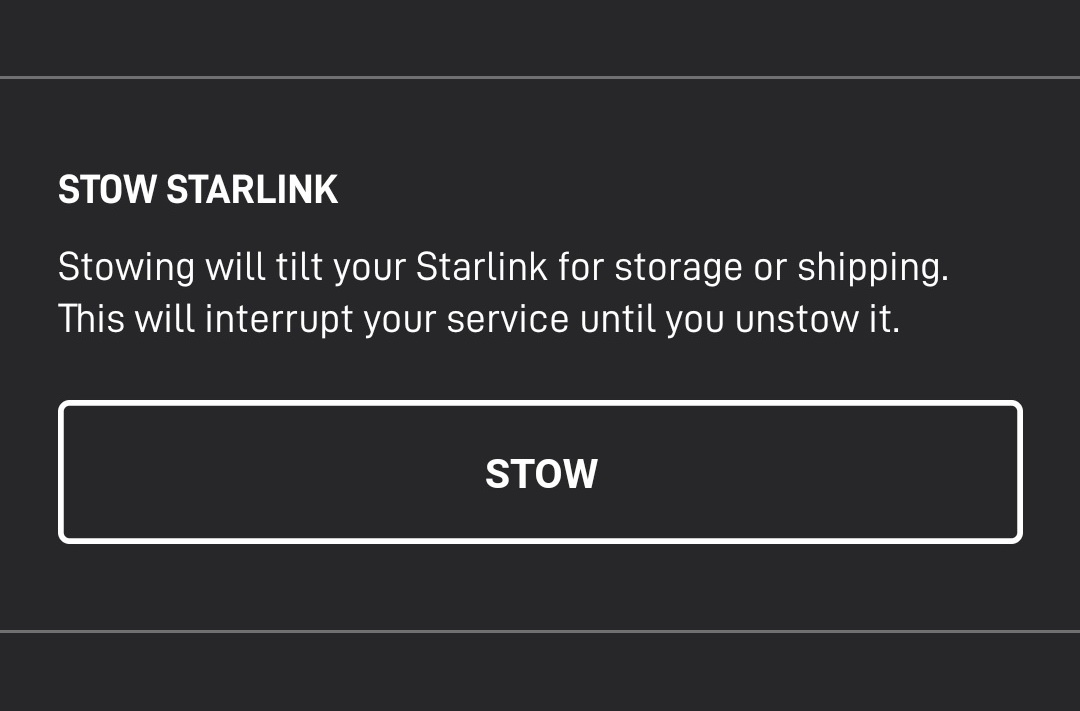
Setup and connection
Let’s start with the fact that there are no buttons at all, neither on the router, nor on the antenna, nor anywhere else. So it’s plug and play in its purest form – the device performs all settings independently after switching on; the user only needs to install the Starlink program and log in, after which it will be possible to monitor the setup process. The registration process takes place when ordering the device.
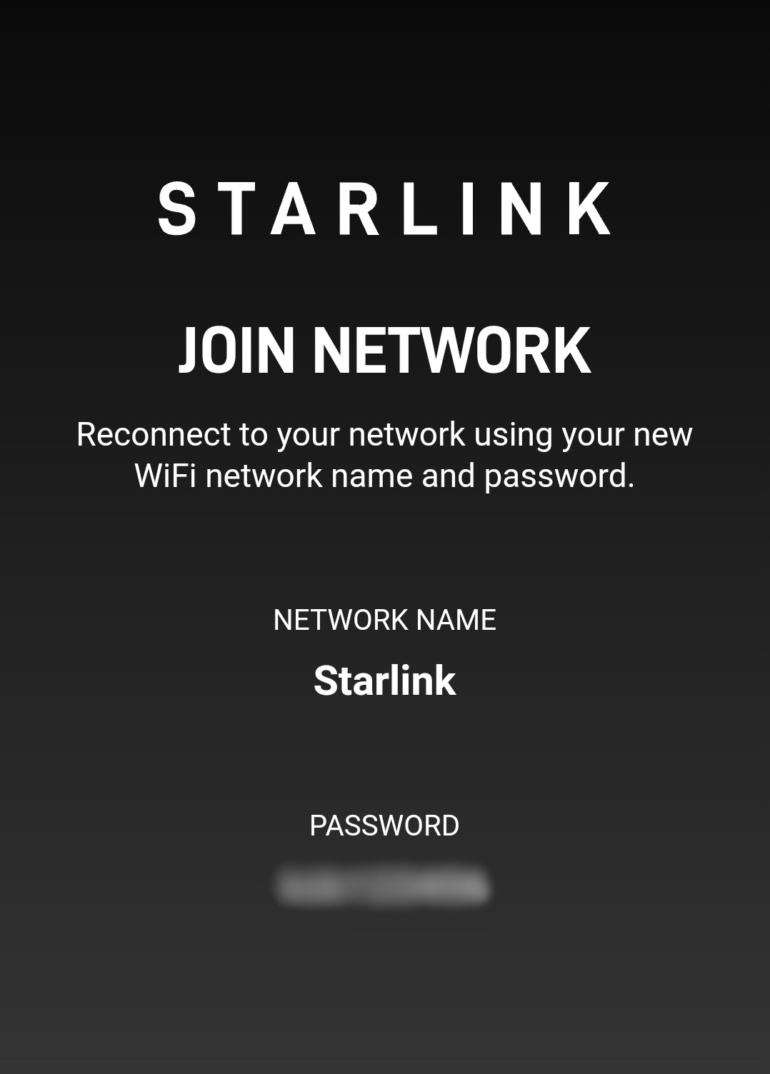
Due to the lack of buttons and any possibility to influence the device, the user is a little surprised at the first connection, especially when you are used to turning everything on and off yourself. So for the first 15 minutes, due to the maximally simplified process and indication in the form of a single white LED, you don’t understand whether you even managed to insert all the cables correctly or you made a mistake somewhere and all this time you were looking at the turned off device. But after some time, the terminal comes to its senses, the antenna begins to rotate in search of a signal from the satellite and freezes in the optimal position, sometimes adjusting it during the day.
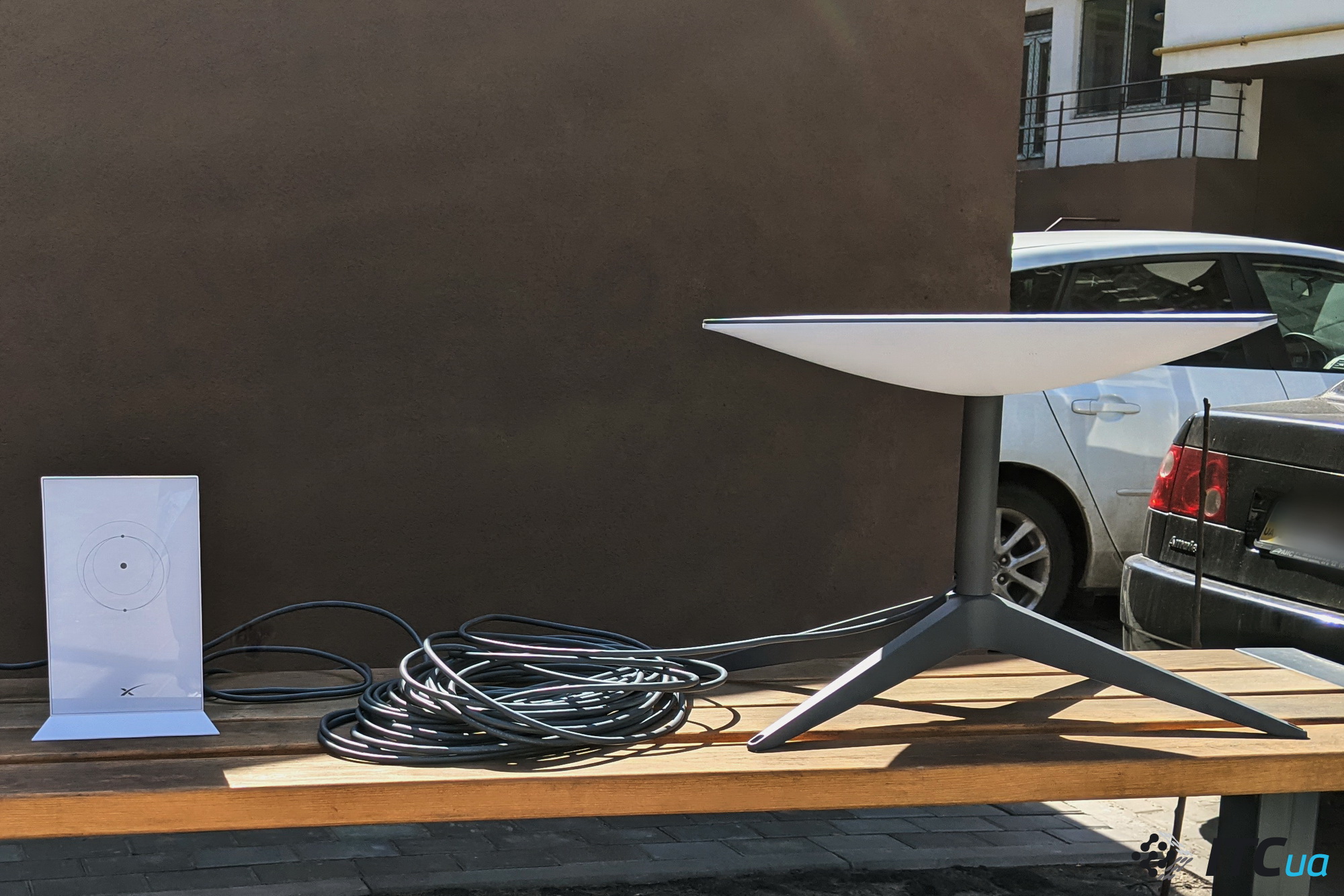
I would like to say: “And after 15 minutes of waiting, you have satellite Internet from SpaceX”, but unfortunately, this is not the case. The first connection failed due to Starlink not working indoors; the antenna must be located in an open area and the placement option even near the window on the balcony of the top floor will not work. This is the first minus. Yes, of course, the system is not designed for use in an apartment, but in the conditions of city life, not everyone has the opportunity to place the antenna on the street.
The second difficulty is that the device does not signal to you what exactly you did wrong, and in the absence of a signal from the satellite, you will simply see the inscription Offline. So you will have to figure out for yourself what exactly is wrong, because the device is not too common and it is quite difficult to find information about the connection. Let’s take a closer look at how the connection works.
Starlink step-by-step connection:
- After unpacking, you have a constructor with 5 basic parts and simple instructions in your hands. We insert the cable with the L-shaped end into the router, as well as the power cable. They fit tight through tight insulating plugs so that’s fine.
- Insert the second end of the 30-meter cable into the antenna until it clicks.
- We install the antenna on the base of the stand and fix it on the surface (if necessary) and connect the power cable coming from the router to the outlet. After that, the antenna must change its position within 15 minutes with the help of built-in motors (it is not necessary to change its position independently, this will lead to damage).
- We download the Starlink program in Google Play or the App Store, log in (this step can be skipped if you are connecting to someone else’s Starlink that is not registered to you), give the network a name and password, after which it should appear in the list of available Wi-Fi points .
- Next, Starlink goes into the mode of searching for a satellite signal and, accordingly, until Wi-Fi is found, there will be no access to the Internet. In order to make sure of the quality of the signal, you can go to the Visibility tab and scan the sky using the smartphone camera, after which the program will tell you in which area there are obstacles. In urban conditions, it is not possible to achieve a completely clear sky, so the program will in any case continue to recommend the search for a better location. This is not critical, but it affects the speed of the Internet, so we ignore this point if you do not have the opportunity to go to the field, and continue the installation further.
- After some time (5-10 minutes), the satellite is still detected, the terminal catches its signal and the device finally goes online. All your personal satellite internet from SpaceX is ready to use.
Test results and usage scenarios
After connecting to the Starlink network, it gives a speed of up to 5 Mbps for download and up to 6 Mbps for return when testing through third-party services, although in the first tests through the proprietary application, the result reached 33 Mbps download and up to 40 Mbps for return, with jumps to 80-90. Mbps. The signal is not stable and connection breaks happen quite often, but connecting to an access point is as fast as if you were using your home Wi-Fi.
Yes, the result of the speed test is not impressive, but it is worth considering that these are the results of operation in the conditions of a large metropolis, namely in the center of Kyiv, for which Starlink is not very designed. It is positioned as a solution for those locations where access to the mobile network is extremely difficult or absent in principle, and in such places there are no problems with interference from the urban environment.
Starlink can be a replacement for the standard Internet from the provider, if for some reason you cannot use it. It is a fully independent and cyber-attack-resistant network that cannot be disabled by conventional means and does not depend on infrastructure. Yes, the pleasure is not cheap, but it is essentially your personal Internet, which will work as long as you have access to electricity and the open sky (and $1,200 subscription fee per year), and which does not require the user to have any knowledge at all to connect. But still, it is rather a backup option in case of an emergency, which is especially relevant today.
It can also be used as a mobile Internet access point, which does not depend on the provider, if you connect it to a generator or a charging station (we tested it in a pair with a ZS from EcoFlow, a review of which will be released a little later).
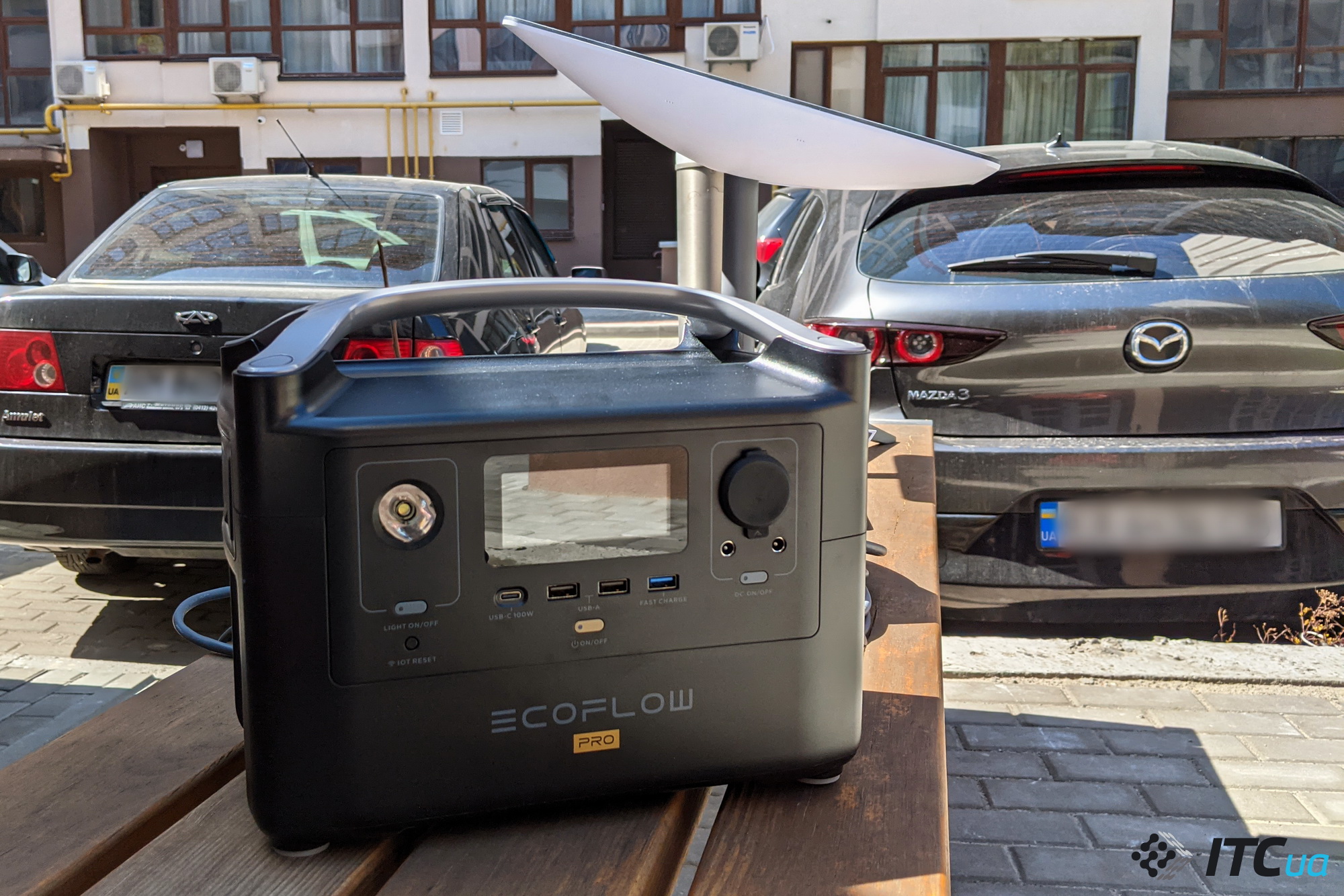
Results
To summarize, the primary usage scenario is rural areas, mountains, villages and hard-to-reach areas where there is no mobile coverage. In this case, the use of Starlink is fully justified. Use in an urban environment cannot yet compete with a classic connection to the network, but it can serve as a backup option in case of an emergency. But, in spite of everything, there is such an option and Starlink from SpaceX is now also working on the territory of Ukraine.




